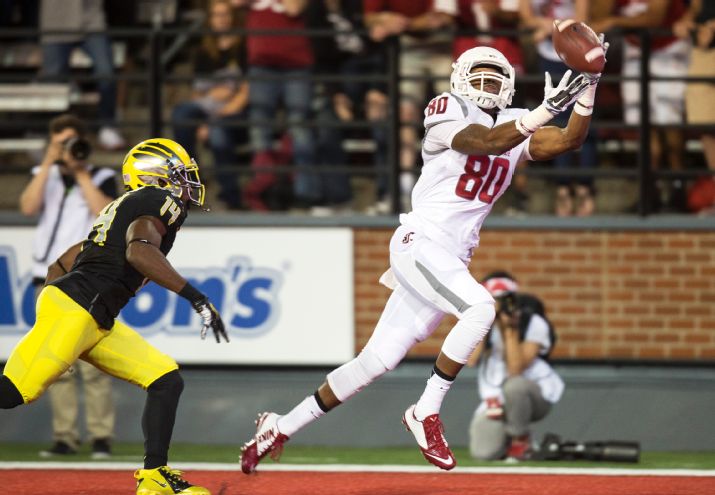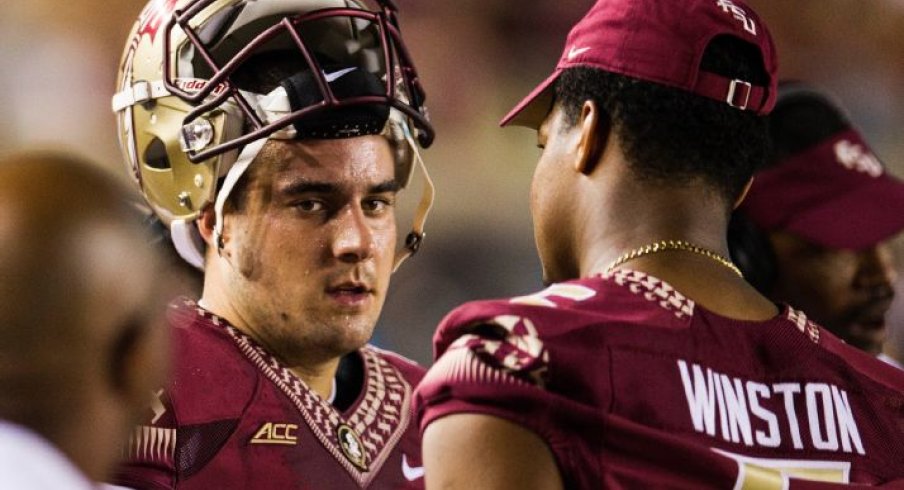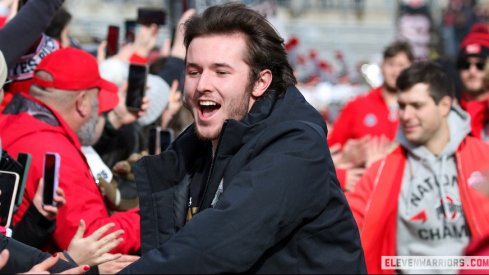In two plays in its overtime win against Clemson, Florida State punctuated a glaring weakness in its team. After Clemson turned the ball over on downs in its overtime possession, Karlos Williams ran for 13 yards on FSU's first play from scrimmage.
With it, Florida State had one whole rushing yard for the game after four quarters and one play in overtime.
A 12-yard run and game-winning score on the next play from Karlos Williams gave the Seminoles 13 rushing yards for the game against a Clemson team that conceded 328 rushing yards to Georgia in its only other game against FBS competition.
Jameis Winston's suspension and Sean Maguire's struggles throwing the ball are a convenient and still important explanation for Florida State being on the brink of a loss against Clemson. Florida State still can't run the ball with Winston. The Seminoles' starting tailback, Karlos Williams, had just 66 rushing yards in its only other game against FBS competition (Oklahoma State in the opener). Despite returning a Heisman Trophy-winning quarterback, an all-conference tight end, and four of five offensive linemen, the Seminoles can't run the ball.
This was a recurring theme from Saturday's top five teams. All five (Florida State, Oregon, Alabama, Oklahoma, and Auburn) won. No one necessarily looked the billing of an elite, national championship-caliber team.
The best of the bunch was Alabama, which won by 21 points over Florida. It's hard to find much fault with a performance that saw Alabama throw for 449 yards, run for 196 yards, and win by three touchdowns. If anything else, it may to put rest skepticism about Lane Kiffin's credentials as an offensive coordinator. It may even make him a head coaching candidate once more.
However, Florida is terrible and Alabama won at home. Though Alabama looked the best of the bunch, two problems manifested for the Crimson Tide. While the offense is full of fireworks, Alabama found ways to shoot itself in the foot on offense. The Crimson Tide had four turnovers, three on interceptions. Three of Alabama's four turnovers resulted in all 21 points for Florida on the afternoon.
Second, Alabama's normally stout secondary, the post upon which Nick Saban hangs his hat, had an incomplete performance on Saturday. The overall numbers (200 yards of total offense conceded) are well enough, but coverage busts emerged in Alabama's back four.
In fact, Alabama is not even in the top ten in yards per play on defense. No one in the mighty SEC is.
In-state conference rival Auburn struggled against Kansas State, though Kansas State hosted the primetime game on Thursday and is a solid top 25 team in the country.
Credit Auburn for winning that game in foreign territory on its rushing defense. Kansas State was held to 40 rushing yards. It had 232 rushing yards and four touchdowns in its last game against Iowa State.
However good of a resume win that ultimately is for Auburn, it may have been lucky. Kansas State left three field goals off the scoreboard because of #collegekickers. It had another sure touchdown tipped into an interception. Several other Kansas State miscues make Auburn's win as much (or more) about Kansas State than Auburn.
Further, the country's most dangerous rushing attack looked average against Kansas State. It tallied just 3.1 yards per carry. Auburn's offense was kept afloat by flashes of Nick Marshall's purportedly improved passing (17/31 for 231 yards, 2 TDs/1 INT). It's a stretch to assume that type of offensive output is sustainable for Auburn in the long-run.
Oregon and Oklahoma had struggles that are partially understandable. The most difficult game to play in college football is, all else equal, the conference road game. The quality of the opponent on the road varies, but the dilemma is a constant. Teams are in a weekly season grind, without regular bye weeks or additional weeks to prepare and rest. Conference opponents are more familiar with (and have better scouted against) conference competition. Night games are different animals as well.
This shorthand explanation for the difficulty of conference road games is what Oregon fans will be hoping the playoff selection committee believes as well. Oregon traveled to Pullman to play 1-2 Washington State and escaped with just a touchdown victory. Oregon was favored by three touchdowns.

Oregon was never known for defense. Its program assumes (reasonably) it can front-run against anyone. It works against most opponents. It worked against Michigan State as well. Absent an elite defense, it struggled to do that against Washington State on Saturday night.
Washington State did almost nothing wrong on offense, save for two turnovers. Connor Halliday was 43/63 throwing the ball for 436 yards, four touchdowns and no interceptions. Washington State also picked up 69 (sack-adjusted) rushing yards on the game. Mind you, this is Washington State, which may average less than 40 rushing yards this season. This is comparable to conceding 200 rushing yards to almost anyone else.
To be fair, Oregon's offense was again spectacular. Marcus Mariota threw just four incompletions (21/25 passing) to go with throwing for all five of Oregon's touchdowns on the game. However, this isn't about Oregon's offense. Oregon's struggles to get over that hump and win a national championship are about its defense. Great defense is more reliable than a great offense, at least for this spectator. Oregon hasn't had that yet and, averaging 443 yards of offense conceded this season (103rd nationally), doesn't have it now.
Oklahoma fans hoping the Sooners would flex the same muscles it did in overwhelming Tennessee were left wanting after Saturday night. The experience was deja vu from the last trip to Morgantown in 2012.
The Sooners defense was again obliterated by West Virginia in Morgantown. The Mountaineers tallied 513 yards of offense, including 376 passing yards for Clint Trickett.
Perhaps this much is understandable. WVU is capable of this, having put up 694 yards of offense against Maryland and 393 yards against Alabama. Put another way, WVU might be by far the best 2-2 team in the country. It at least has the best strength of schedule/resume of any other team in that category.
Oklahoma fans can take some comfort in the second half adjustments the Sooners' defense made. The Sooners limited WVU to 147 second-half yards and three points. Three WVU drives ended in turnovers, all before a quick-strike touchdown late in the fourth quarter when the win was all but guaranteed.
For Oklahoma, the problem its competition. It will see this offense again in Baylor. It may find itself challenged by Oklahoma State. It at least has the luxury of hosting both teams.
The Big Ten's banner week was one talking point from the fourth week of the season. The bigger story may have been at the top of the heap. All five teams, like almost all the Big Ten, took care of business. However, no one is quite what we thought they were or what fans of these programs wanted them to be approaching the midway point of the season.


